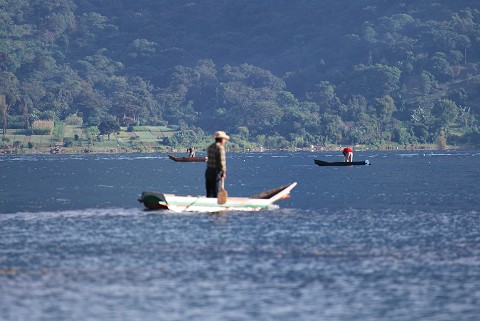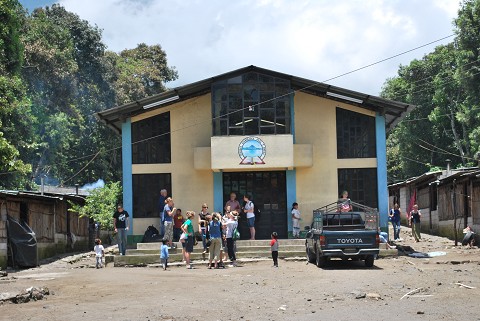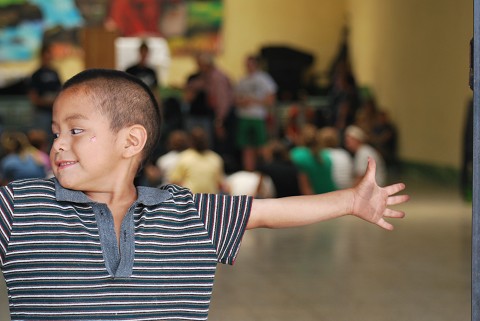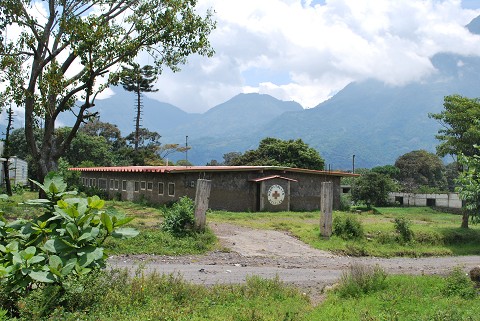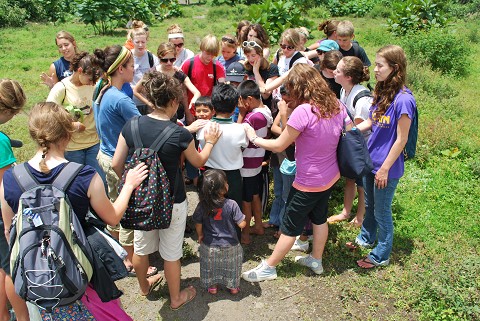Part 2: Seasons in the Land of Eternal Spring
By: Kristen
Photos: Connie Rock
On Lake Atitlán, life moves at a very different pace. There is no rush to get from one location to another, no hurry to press forward and race throughout the day. Moments pass with the same speed as those in dugout canoes-quietly, unhurried, and smooth. Though some roads connect many villages to another, often the quickest way to travel is by water. That is what our team decided to do on this first full day of ministry.
The sun was still rising as we boarded the boat and began to sail past San Pedro. For the first time, we were able to see just how big-and how beautiful-this lake really was. Mountains rose all around us and volcanoes stood silent in the distance, wisps of smoke hovering at their lips. The air was cool, fresh, full of a new day’s promise, and it carried light much like the morning carried the wind. Surrounded by beauty, entranced by what was around us, our team was very excited.

While in Santiago, a large village on the other side of the lake, we were able to visit both a school and a church. While hundreds of school children watched, the team taught them about Noah and the Ark, about how God can be trusted even when it’s scary. When the program was over and we had to leave, there were a few tears. But just moments later, we stumbled upon a church. Those who lived nearby only spoke an Indian dialect, so attempts at communication were difficult. Finally, a member of the congregation came who could speak both Spanish and the common language. He opened the doors to the church and waved us in.
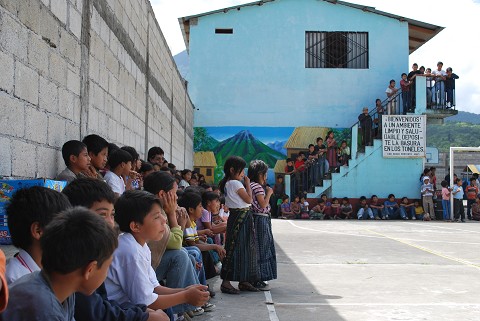
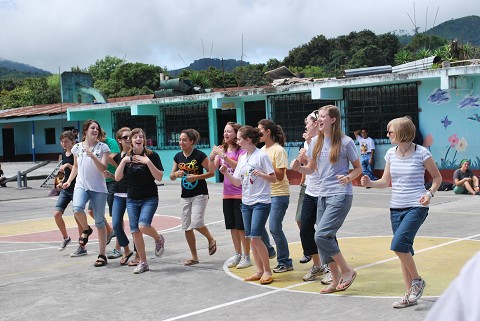
For the next hour, these little ones were poured into. They sang silly songs about a moose and serious songs about Jesus, played some games and heard a story about Noah and the Ark. They got to color on paper and learn more about Christ from those who were touching their hands and giving hugs-those on the team. As I watched the faces of those around me, both dark skinned and light, I was overcome with the beauty of the cross and the power of God’s love, of how it translates through time, culture, and even language. We were separated by three languages-communicating from English to Spanish and finally to the Indian dialect-but still these little ones were able to hear about Christ.
On the way back from the church, the team “prayer walked” through Santiago. Past one beautiful vista after another, over rocky paths and cobbled streets, our team prayed. We had one planned detour: to visit the site of the horrific mudslide of 2004.
As we stepped off the path and looked about us, signs of what happened were few. A local hospital stood at our backs, the line from the mud still visible at shoulder-height. But all around us was vegetation, beautiful hills that rolled at the volcano’s hem, and blue sky beyond. It was a place of life, not death.
Our presence was not unnoticed by those who lived in the area. A young boy, about seven years of age, saw us walking to the site, jumped up, and ran along with us. As we tried to understand the scene before us, he began to tell his story. This young boy was not only injured in the mudslides; he lost his entire family as well. It happened when he was two years old. His parents and siblings all perished in the disaster. His body was burned badly by the steam, most likely from the volcano. We watched as he lifted up his pant leg and showed us his scars, still visible after five years.
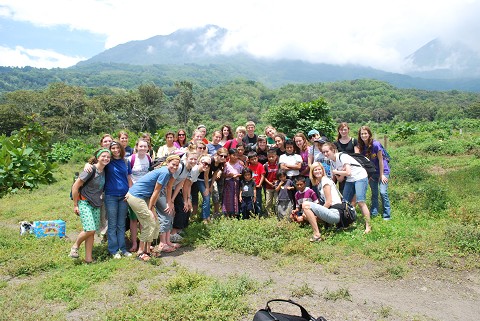
Though he spoke about a terrible personal tragedy, this child had a smile on his face-which only grew bigger when we asked if we could pray with him. He was at peace. Though still marked by grief and physically scarred, he knows the power of restoration because he sees it every day. He is alive. And the place where his family-and 600 other people-died is no longer a barren graveyard. It has been transformed into a place of life.
That’s the thing about hope. True hope-hope in Christ-is eternal and cannot be stamped out no matter the devastation. When we put our hope in Him, not even the darkest night or the greatest tragedy can destroy us. Even when the sides of a mountain literally fall away and cover the earth-even in death. Though on this earth we know the finality and heartbreak of death intimately, one day it will be no more. One day we will see all things made new.
As we left, the boy, who stood on the very site where he lost everything, was still smiling.
